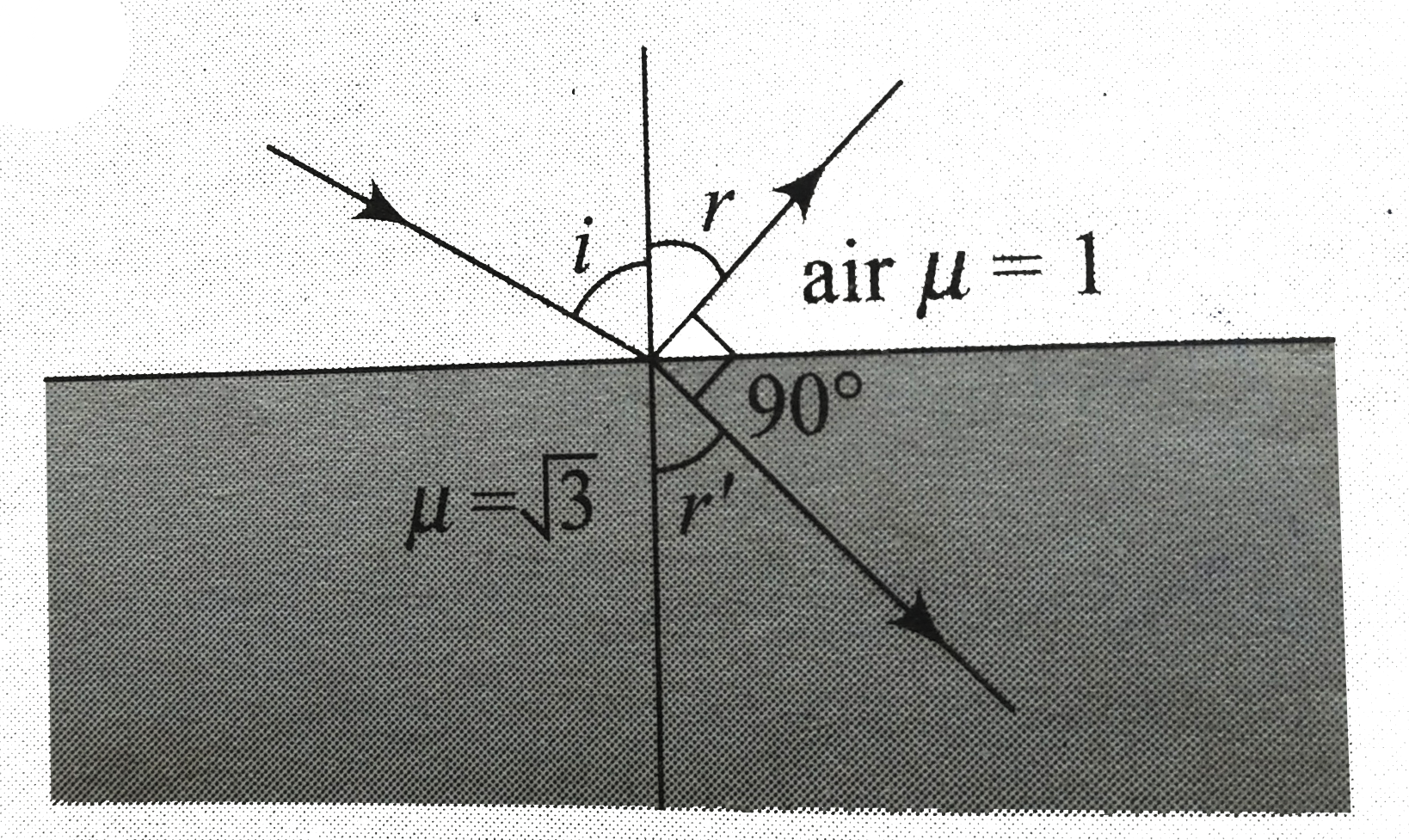A : When an unpolarised light is incident on a glass plate at Brewster angle, the reflected ray and refracted ray are matually perpendicular.
R : The refractive index of glass is equal to sine of the angle of polarisation.
Both A and R are true and R is the correct explanation of A
Both A and R are true and R is not the correct explanation of A
A is true and R is false
Both A and R are false
The correct Answer is:C
Topper's Solved these Questions
- WAVES OPTICSBOOK - AAKASH SERIESCHAPTER - WAVES OPTICSEXERCISE - EXERCISE -II (INTERFERENCE)
27 Videos
- WAVES OPTICSBOOK - AAKASH SERIESCHAPTER - WAVES OPTICSEXERCISE - EXERCISE -II (DIFFRACTION)
17 Videos
- WAVES OPTICSBOOK - AAKASH SERIESCHAPTER - WAVES OPTICSEXERCISE - EXERCISE -IA (ASCENDING AND DSCENDING ORDER TYPE QUESTIONS)
6 Videos
- WAVESBOOK - AAKASH SERIESCHAPTER - WAVESEXERCISE - EXERCISE-III (Doppler effect :)
15 Videos
Similar Questions
A ray of light strikes a glass plate at an angle of incidence 57∘ . If the reflected and refracted rays are perpendicular to each other, what is the refractive index of glass.
View SolutionA ray of light is incident on the surface of a glass plate of reflective index 1.536 such that the reflected and refracted rays are mutually perpendicular. What is the angle of reflection ?
View Solution
Knowledge Check
Assertion (A) : When an unpolarised light is incident on a glass plate at Brewster angle, the reflected ray and refracted ray mutually perpendicular
Reason (R ) : The refractive index of glass is equal to sine of the angle of polarisation.ABoth 'A' and 'R' are true and 'R' is the correct explanation of 'A'BBoth 'A' and 'R' are true and 'R' is not the correct explanation of 'A'CA' is true and 'R' is falseDA' is false and 'R' is trueOn a glass plate, a light beam is incident at an angle of 60∘. If the reflected and the refracted rays are mutually perpendicular, the refractive index of glass is
A√32B√3C32D1√3A ray of unpolarised light is incident on a glass plate at the polarising angle θp. Then
AThe reflected ray and transmitted rays both will be completely polarisedBThe reflected ray will be completely polarised and the transmitted ray will be partially polarisedCThe reflected ray will be partially polarised and the completely ray will be partially polarisedDThe refected and transmitted rays both will be partially polarised.
A ray of light-is incident on glass at the polarising angle ip. Find the angle between the reflected and refracted rays.
View SolutionA ray of light-is incident on glass at the polarising angle ip. Find the angle between the reflected and refracted rays.
View SolutionA ray of light is incident on a transparent glass slab of refractive index √3. If the reflected and refracted rays are mutually perpendicular, what is the angle of incidence?

View SolutionA ray of light strikes a glass plate at an angle of 40∘. If the reflected and refracted rays are perpendicular to each other the index of refractive of glass is
View SolutionA ray of unpolarised light is incident on a glass plate at the polarising angle of 57∘ .
Now,
View Solution
